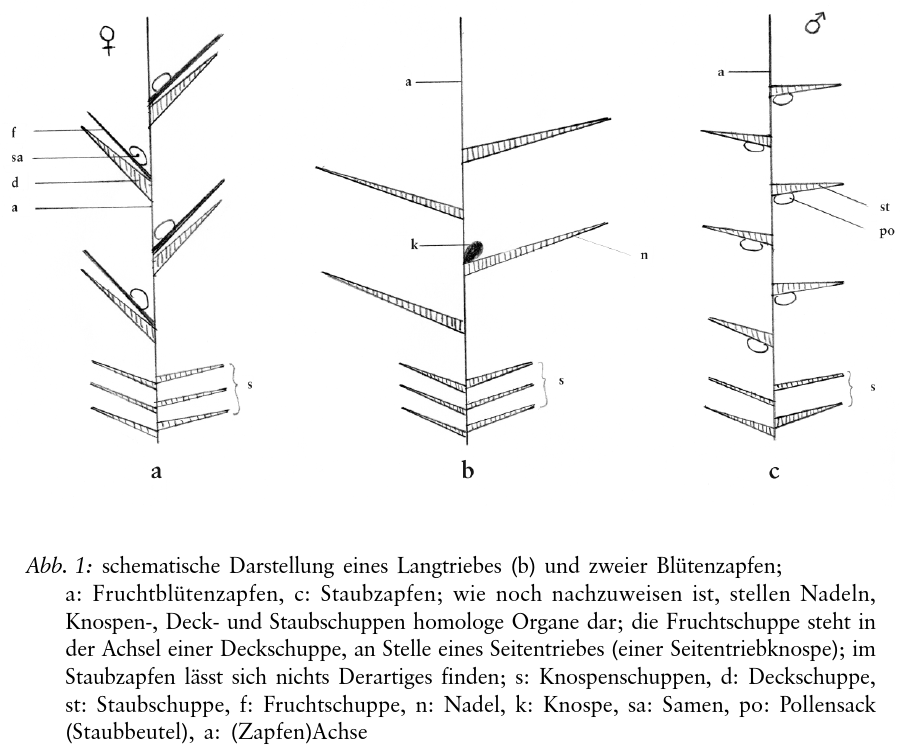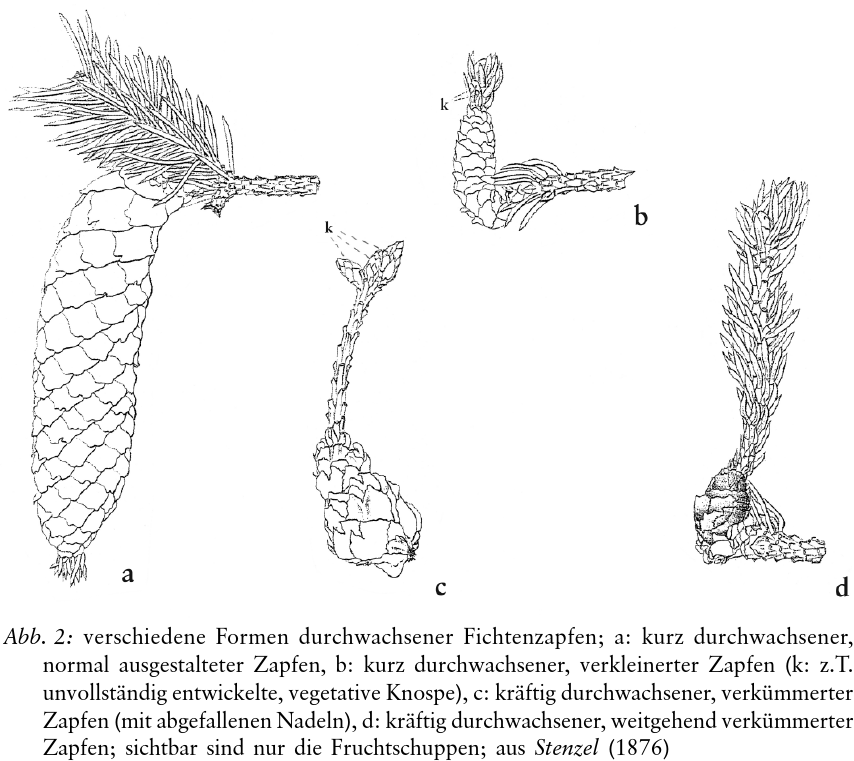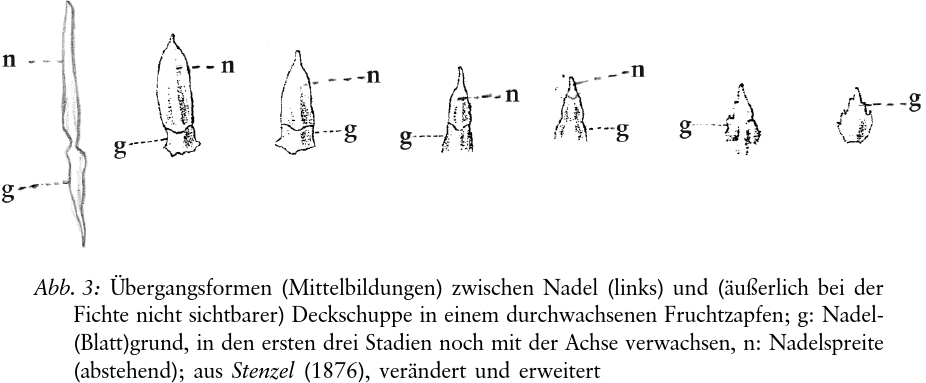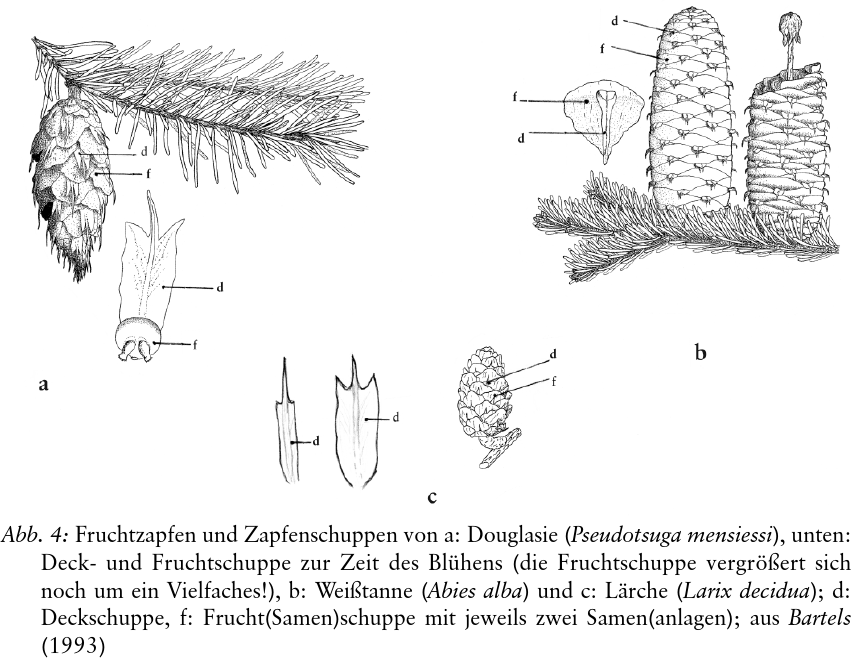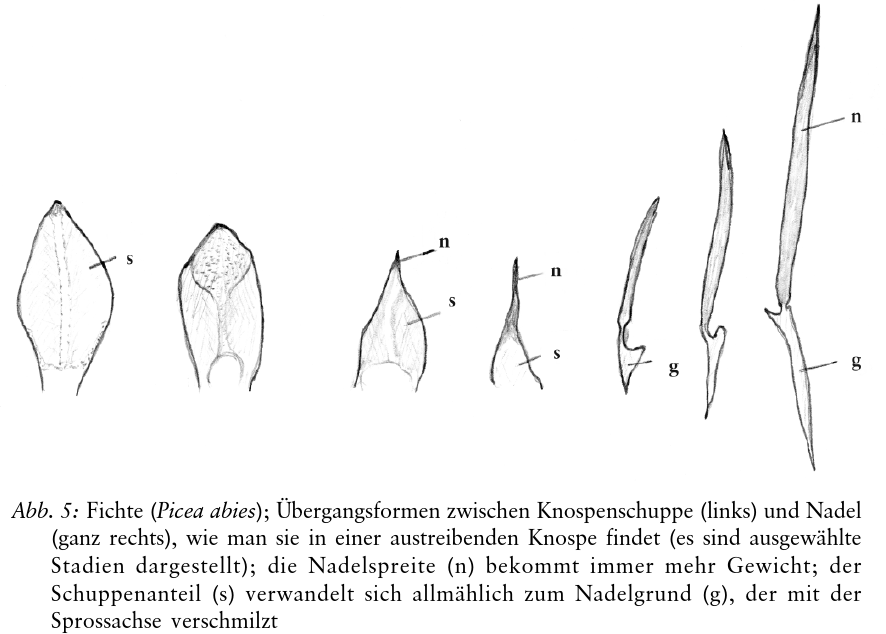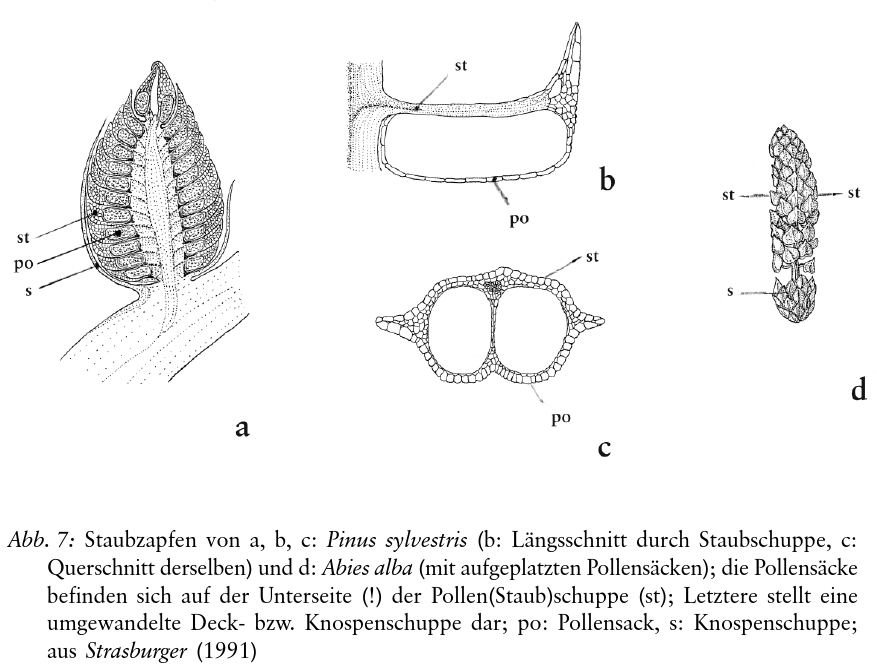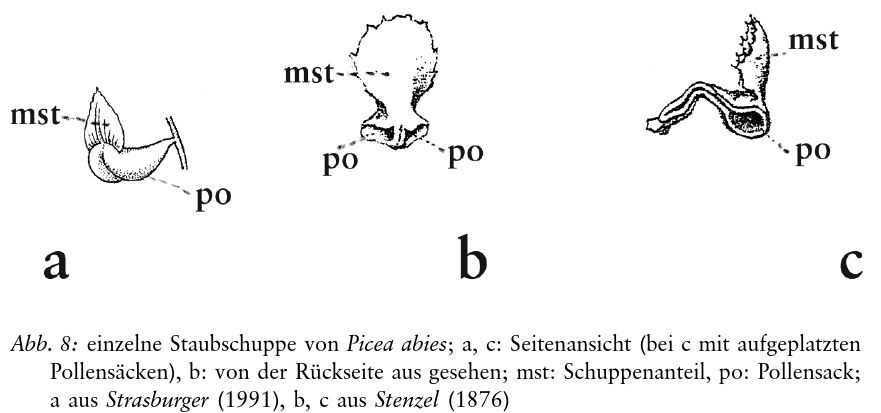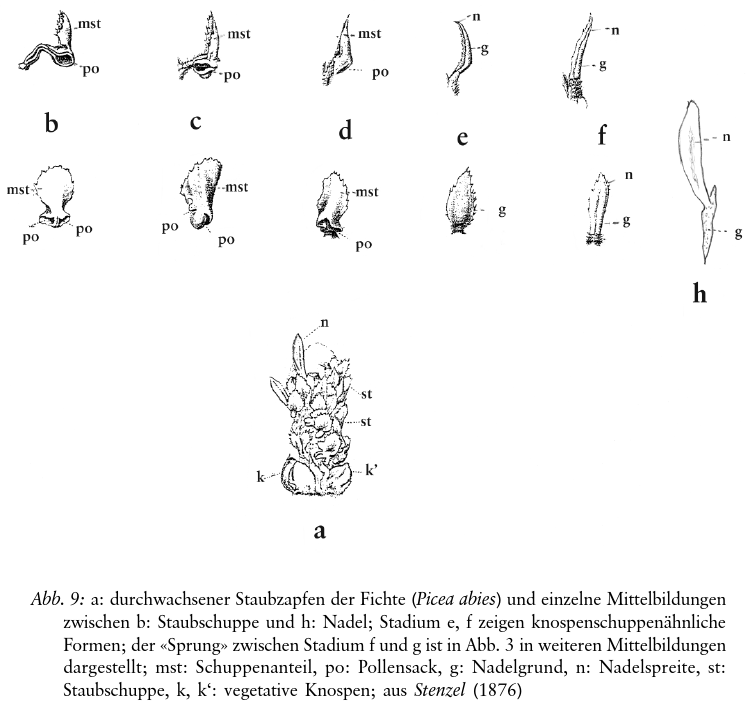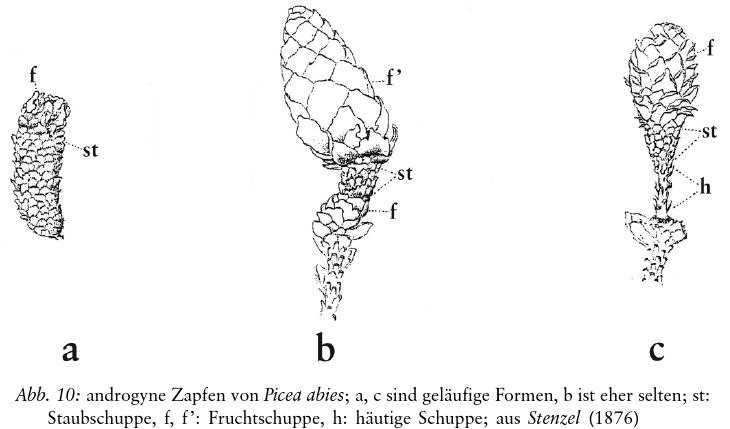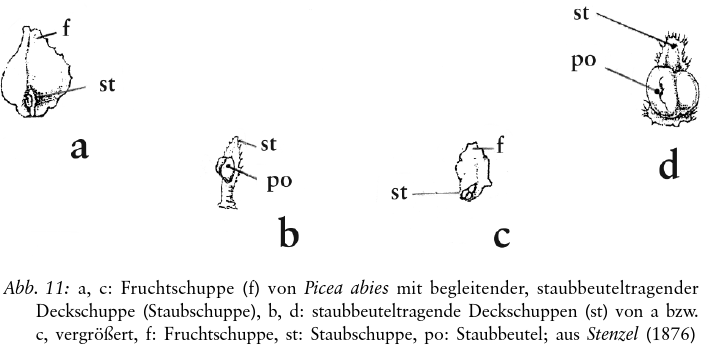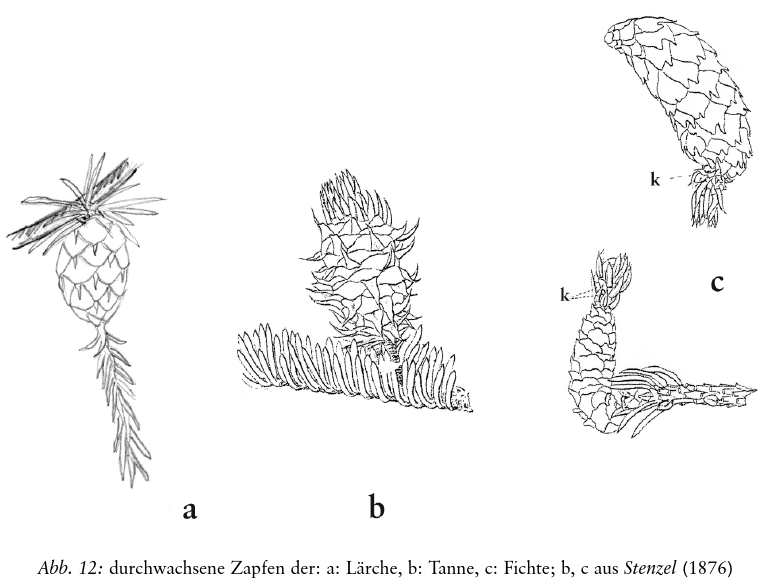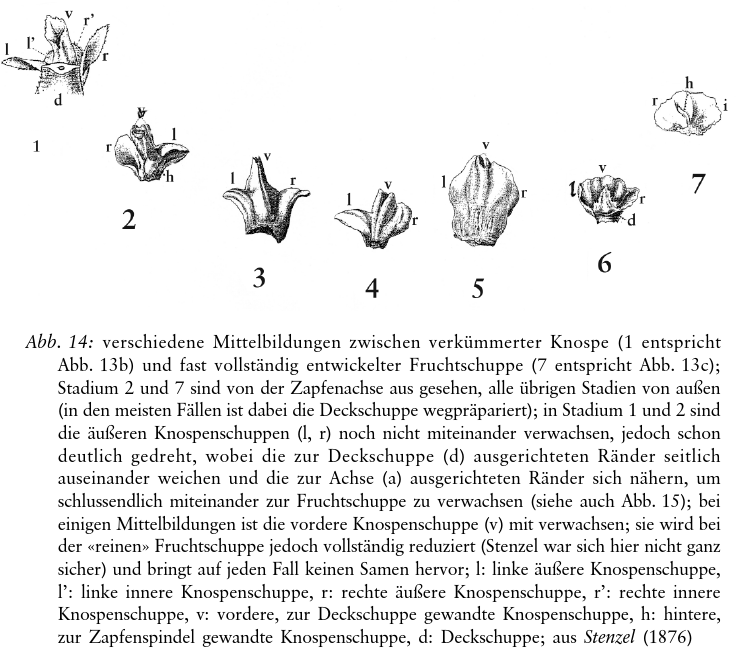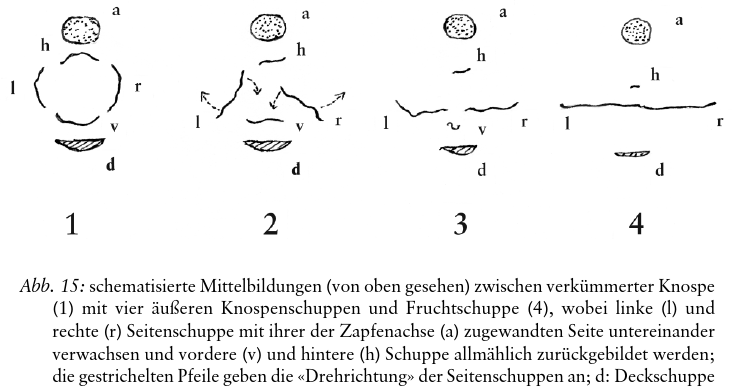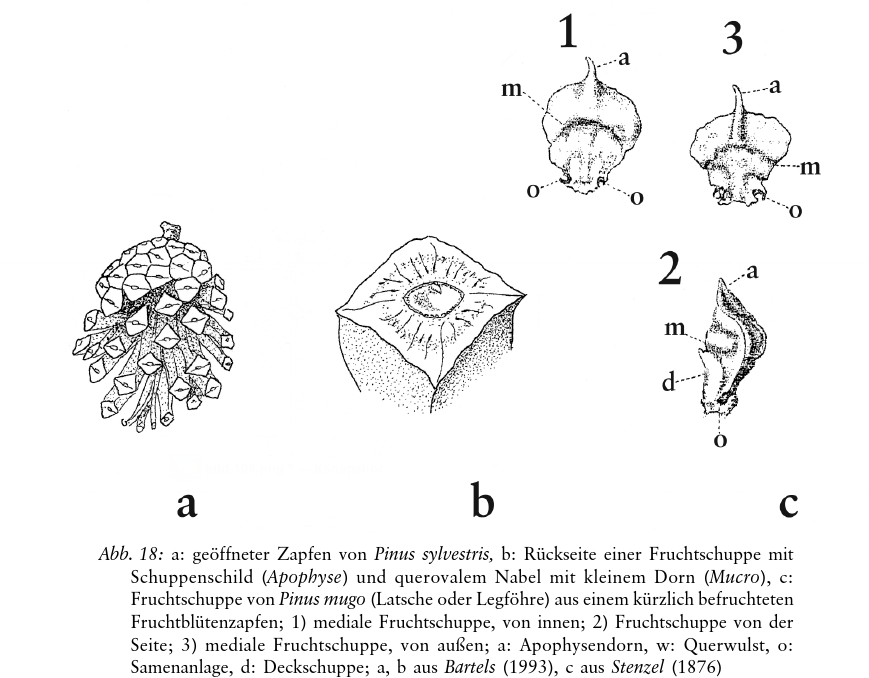Der Fruchtzapfen des Nadelbaumes
Export Article Citation as
- Plain text
- BibTeX
- RIS format
- Download price : € 6.00
Abstract:
Conifers get their name from their characteristic cone-shaped flowers and fruit. A flower cone is not a single flower but an inflorescence. When flowering is over, if it is a pollen-bearing cone it dries up and falls off, or, if ovule-bearing, it develops further into a seed cone. The characteristic dominance of the trunk in the overall shape of the conifer tree is also reflected in the shape of the seed cones; these not only develop like little trees but also are strongly subject to lignification processes. Conifers are only classified as ‘flowering plants’ because, like flowering plants, their flowers produce pollen and fruit. Yet they posses not even the rudiments of a perianth and the seeds lie exposed on the fruit scales, i.e. are not surrounded by a carpel. The question arises as to whether this plant group, one that produces only trees, should be recognised as a completely separate group. Cone samples presented in detail by Stenzel (1876), who has largely been forgotten, can help to develop a new approach to this question.
